The Dribble Drive Motion basically has the sideline break built into it, with the goal being to get the ball up the sideline as quick as possible (for more info check out the book on the right side of the site). For years I’ve run a sideline break that fits perfectly into the Dribble Drive, has lots of reads and will give you four scoring opportunities in about three seconds.
We have nicknamed it the “Slow Break”, because although it works great as a fast break, it is equally good after a made basket, or when your big has secured a rebound, and the other team have numbers back on defense. We have run it as an automatic after made baskets or when the big has rebounded the ball.
Note that the slow break works great with the High Post Offense too.
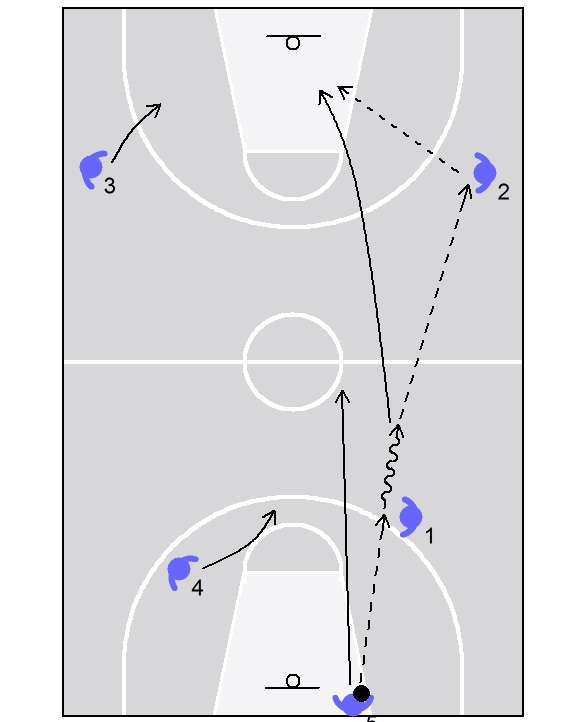 The Slow Break can be run both sides of the court, here it’s shown on the right side.
The Slow Break can be run both sides of the court, here it’s shown on the right side.
The big, 5, has taken the ball out of bounds, and wings 2 and 3 have taken off up the court, stopping at foul line extended, as in the Dribble Drive Break.
5 can inbound to either 1 or 4, here he inbounds to 1.
1, being on the right side of the court will look to pass to 2. It’s a coaches call if 2 and 3 should drop to the baseline when 1 crosses mid court, but off of this automatic I’d probably keep them high. If 2 is over-played he should go back door for an easy layup.
1 passes to 2, then accelerates and looks for a give-and-go. This cut will not be open very often, but it will lead to the occasional open layup. More often it opens up the key for the next cut.
After inbounding 5 sprints up the court.
4 will hang back and trail 5.
Note: 2 can receive the ball at any time when sprinting up the sideline. He will then just dribble up to attack the defense off the dribble. If he can’t get to the rim he will pull back and look for the next options.
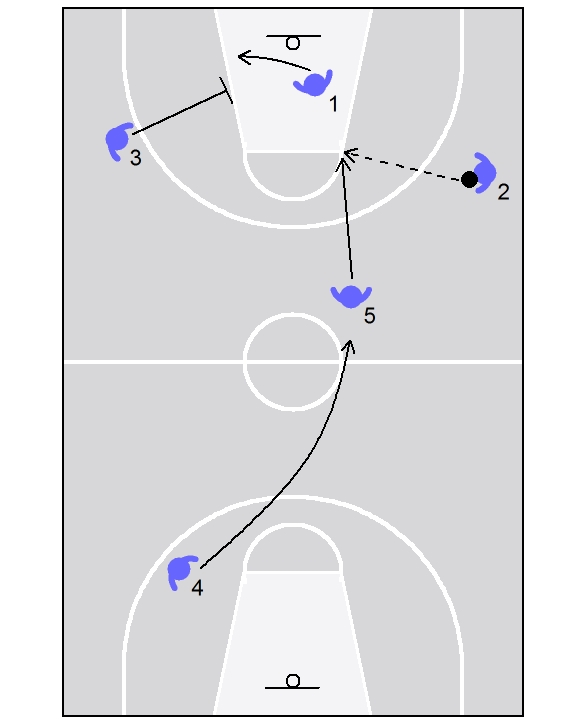 After 1 has cut through 5 sprints to the foul line for a jump stop. Usually this surprises the defender X5 and 5 gets an open shot or a close-out drive as X5 tries to recover.
After 1 has cut through 5 sprints to the foul line for a jump stop. Usually this surprises the defender X5 and 5 gets an open shot or a close-out drive as X5 tries to recover.
1 continues his cut, as 3 sets a down screen on the weak side block.
4 is hot on the heels of 5, looking for the next option.
.
.
.
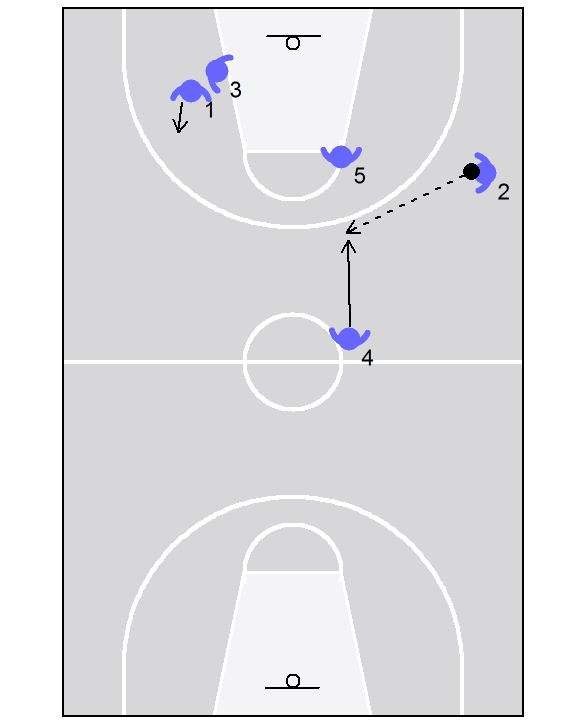 If 2 doesn’t hit 5 he now looks for 4. As 4 is right behind 5 he is very often wide open for a shot, with 5 and 3 in great rebound position.
If 2 doesn’t hit 5 he now looks for 4. As 4 is right behind 5 he is very often wide open for a shot, with 5 and 3 in great rebound position.
1 continues off 3’s down screen.
It’s important that 4 doesn’t just look for his own chance here. He must be available to receive the ball from 2, even if he has to hang back out of shooting range.
.
.
.
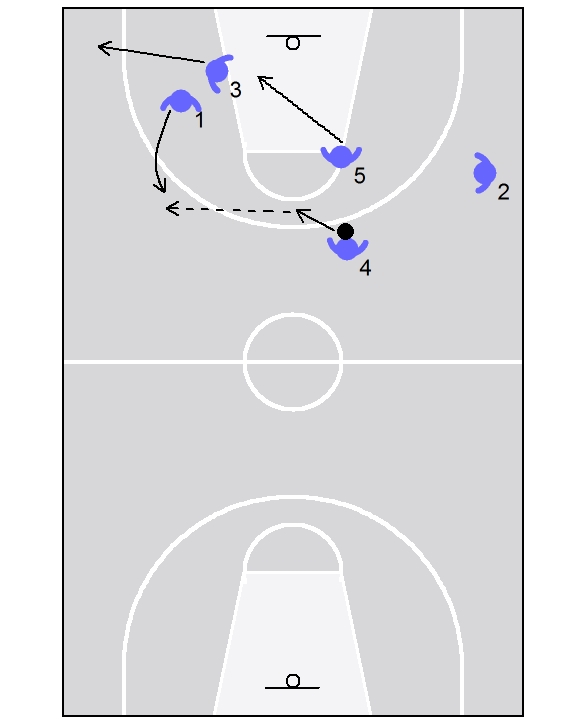 4 now takes a dribble towards 1 coming off the screen and pitches the ball to him for a shot.
4 now takes a dribble towards 1 coming off the screen and pitches the ball to him for a shot.
5 looks for the post-up.
2 and 3 goes to their corners, and essentially we’re set up for the dribble drive, if we haven’t taken a shot yet.
All these shot options will come within 3-5 seconds.
Featured products
The Dribble Drive Offense – A Complete Instruction Manual
147,00 kr.The Dribble Drive Zone Offense System
64,00 kr.Two Book Dribble Drive Man And Zone Offense Bundle
Original price was: 211,00 kr..160,00 kr.Current price is: 160,00 kr..



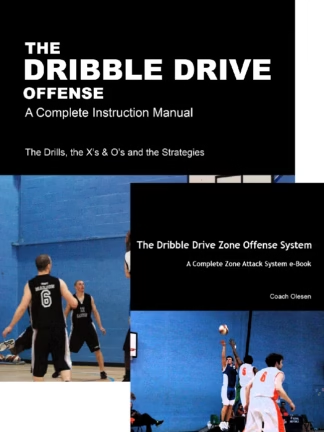
What do you do on rebound outlet. Is 5 always the first one down?
Hi Rod,
Exact same thing on the rebound outlet, if the big man (5) rebounds.
A lot of the time we also run another big man (power forward) at the three spot, and if either of the wings get the rebound the 5 may take the three-spot in this break, setting the hard inside screen then spinning to post up.